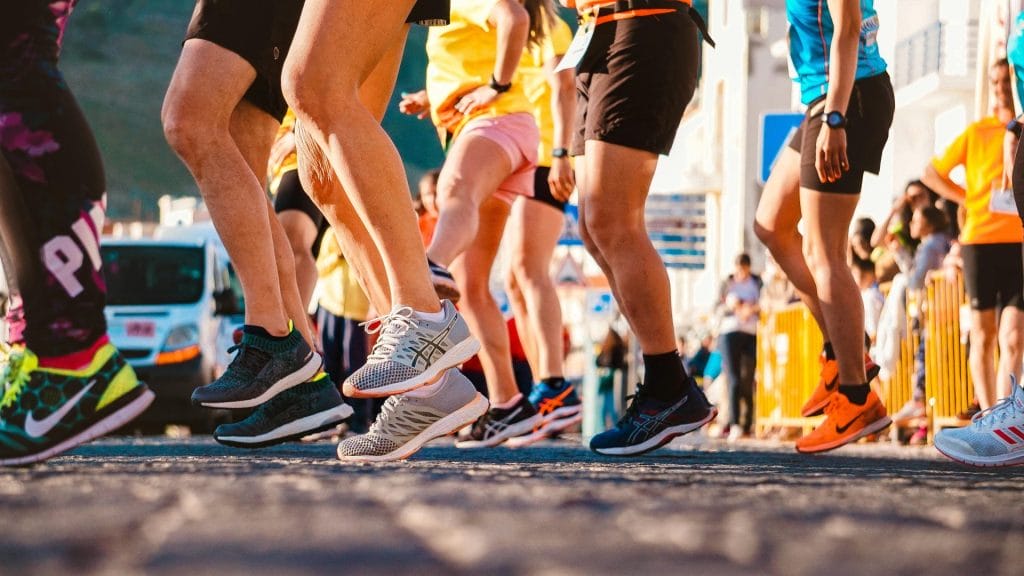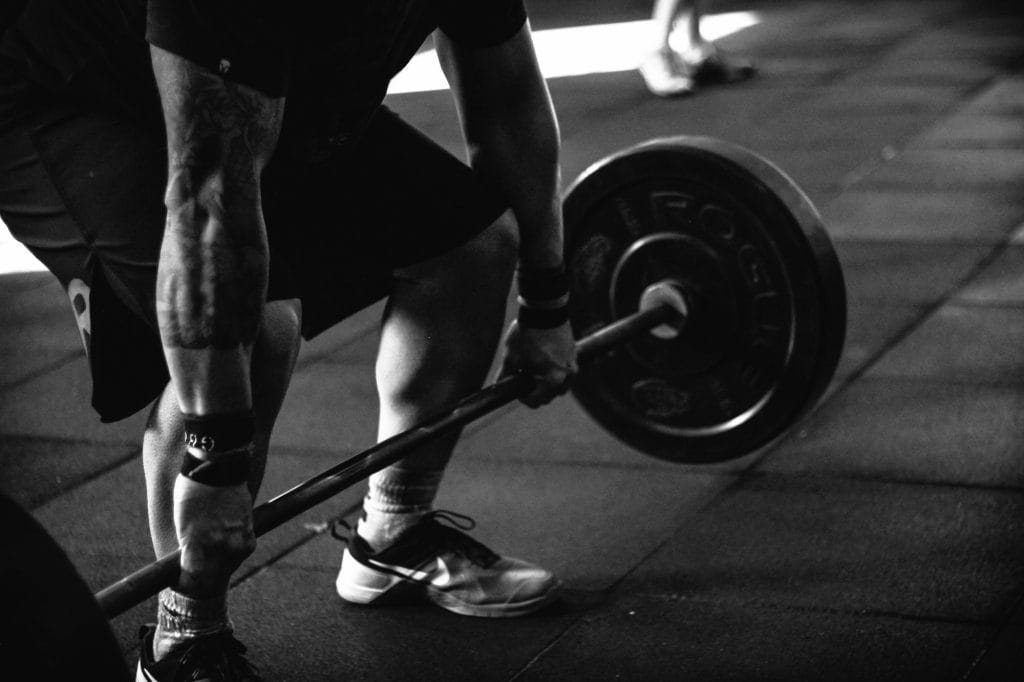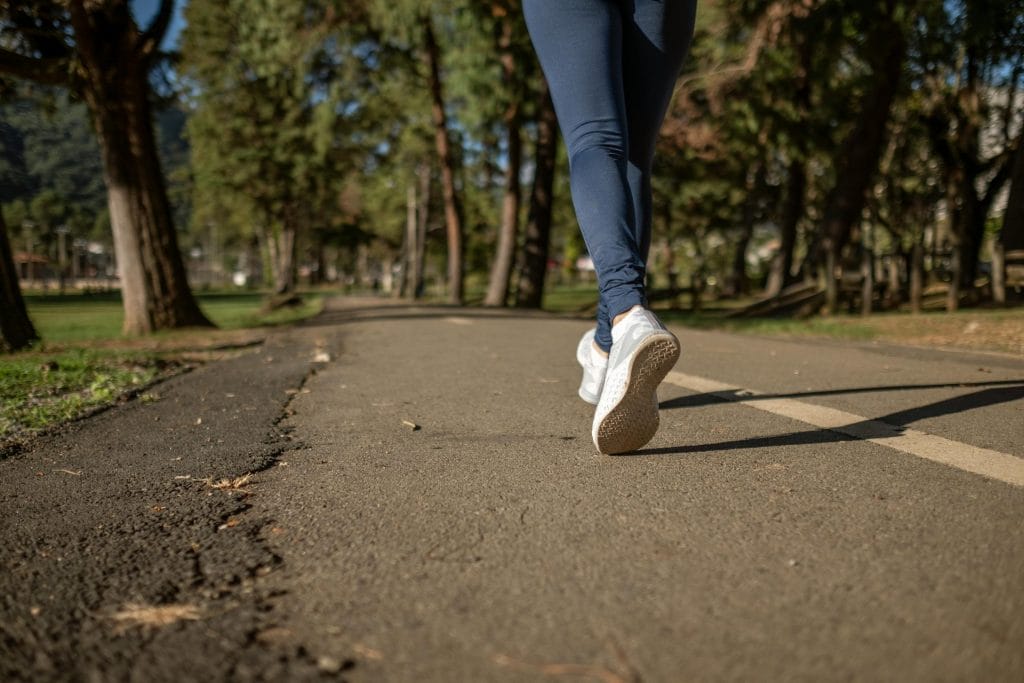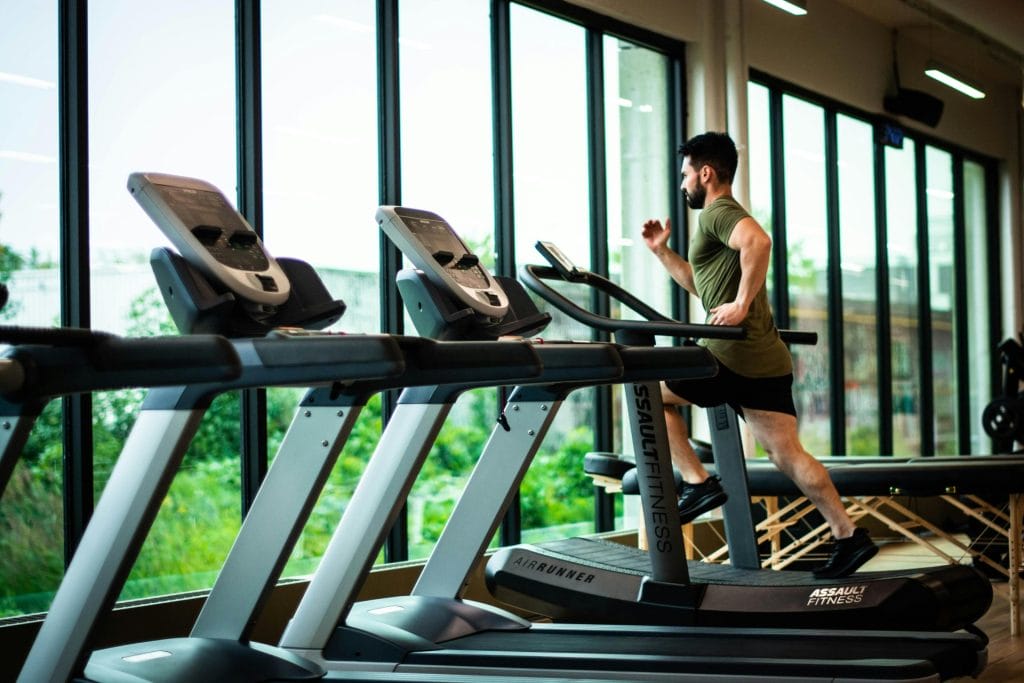The Energy Crisis That’s Draining Your Life
You wake up tired. You drag yourself through the morning. By 2 PM, you’re hitting that inevitable energy wall, reaching for your third cup of coffee or desperately searching for a sugar rush. Sound familiar? You’re not alone.
You’re caught in an exhausting cycle where low energy steals your productivity, dampens your mood, and robs you of the vibrant life you deserve. Every day feels like an uphill battle against fatigue, and no amount of caffeine seems to provide lasting relief. You’ve tried energy drinks, power naps, and maybe even considered expensive supplements, but nothing gives you that sustained, natural energy boost you’re craving.

The frustration is real. You watch others around you seeming to effortlessly power through their days while you struggle to maintain focus and enthusiasm. You know you’re capable of more, but your energy levels are holding you back from reaching your full potential.
Why Your Current Energy Solutions Are Failing You
Here’s the harsh truth: most quick-fix energy solutions are actually making your problem worse. That afternoon energy drink might give you a temporary spike, but it’s followed by an inevitable crash that leaves you more depleted than before. Those sugary snacks provide a brief burst of glucose, but they’re setting you up for blood sugar rollercoaster rides that drain your energy reserves even further.
Your body is designed to be an energy-producing powerhouse, but you’re running it on the wrong fuel and neglecting the most powerful energy generator you possess: your own mitochondria.
The real problem isn’t that you need more caffeine or another supplement. The issue is that your cellular energy factories – your mitochondria – aren’t functioning at their optimal capacity. Exercise can create physical changes that help increase energy levels inside the body. In addition, it can induce better sleep at night, which helps people feel more energetic in the morning [1].
You’re not just tired; you’re operating with suboptimal cellular energy production. Every cell in your body contains these microscopic powerhouses, and when they’re not firing on all cylinders, you feel it in every aspect of your life – from your physical stamina to your mental clarity.
The Revolutionary Solution: Exercise as Your Natural Energy Amplifier
The solution isn’t found in a bottle or a packet – it’s found in movement. Exercise is the most powerful, scientifically-proven method to naturally boost your energy levels from the inside out [3]. This isn’t just about getting your heart pumping for 30 minutes; it’s about fundamentally transforming how your body produces and sustains energy.

Recent research reveals that exercise to decrease the feelings of fatigue by a small effect size (g = −0.374; 95% CI [−0.521, −0.227]), increase energy by a small-to-moderate effect size (g = 0.415; 95% CI [0.252, 0.578]), and to increase the feeling of vitality by a moderate effect size (g = 0.537; 95% CI [0.404, 0.671]) [4]. Translation? Exercise doesn’t just make you feel slightly better – it creates measurable, significant improvements in your energy and vitality.
The Cellular Revolution: How Exercise Transforms Your Energy Production
When you exercise, something remarkable happens at the cellular level. Exertion spurs your body to produce more mitochondria inside your muscle cells. Mitochondria are known as the powerhouses of cells, because they create fuel out of glucose from the food you eat and oxygen from the air you breathe. Having more of them increases your body’s energy supply [1].

Think of mitochondria as tiny energy factories inside each cell. The more factories you have, and the more efficiently they operate, the more energy you can produce. Exercise is like sending a construction crew to build new factories while simultaneously upgrading the existing ones [11].
Exercising also boosts oxygen circulation inside your body. This increase in oxygen not only supports the mitochondria’s energy production, it allows your body to function better and to use its energy more efficiently [1]. You’re not just creating more energy; you’re making your entire system more efficient at using that energy.
The Immediate Energy Boost: Results You Can Feel Today
You don’t have to wait weeks to feel the benefits. Research from the University of Georgia found that a single bout of exercise consistently increases feelings of energy. In 91 percent of comparisons, feelings of energy increased after exercise compared to sitting quietly in control conditions. The average energy boost after exercise was large enough to meaningfully improve the participant’s mood that day [10].
This means that even your first workout can provide an immediate energy boost that improves how you feel for the rest of the day. It’s like having a natural energy pill that works within minutes of taking it.
Your Complete Exercise Energy Arsenal
1. High-Intensity Interval Training (HIIT): Maximum Energy in Minimum Time
HIIT is your secret weapon for rapid energy enhancement. This training method alternates short bursts of intense activity with brief recovery periods, typically lasting 15-30 minutes total.
Why HIIT Works for Energy:
Studies have observed ~15% increases in VO2max per kg BW in HIIT groups over 6-12 weeks of training, compared to ~10% in control groups performing steady-state training [14]
- Creates significant mitochondrial adaptations in less time
- Provides an “afterburn effect” that keeps your metabolism elevated for hours
Your HIIT Energy Protocol:
- Beginner: 20 seconds intense activity, 40 seconds rest, repeat 8 times
- Intermediate: 30 seconds intense activity, 30 seconds rest, repeat 10 times
- Advanced: 40 seconds intense activity, 20 seconds rest, repeat 12 times
Best HIIT Exercises for Energy:
- Burpees
- Mountain climbers
- Jump squats
- High knees
- Cycling sprints
- Rowing intervals

2. Steady-State Cardio: Building Your Energy Foundation
While HIIT provides explosive benefits, steady-state cardio builds your aerobic base – the foundation of sustainable energy. This involves maintaining a consistent, moderate intensity for 20-60 minutes.
The Energy Benefits:
Steady-state cardio has been associated with better mood and a positive body image, promotes weight loss and helps boost endurance [5]
- Improves oxygen delivery throughout your body
- Enhances your body’s ability to use fat as fuel
- Builds cardiovascular efficiency
Your Steady-State Energy Plan:
- Target Zone: 65-75% of your maximum heart rate
- Duration: Start with 20 minutes, gradually increase to 45-60 minutes
- Frequency: 3-4 times per week
Best Steady-State Activities:
- Brisk walking or hiking
- Swimming
- Cycling
- Rowing
- Jogging
- Dancing

3. Resistance Training: Powering Up Your Energy Engines
Don’t overlook the energy-boosting power of strength training. 12-weeks of resistance exercise training resulted in qualitative and quantitative changes in skeletal muscle mitochondrial respiration, meaning your muscles become more efficient at producing energy [13].
Resistance Training for Energy:
- Compound movements: Squats, deadlifts, push-ups, pull-ups
- Circuit training: Minimal rest between exercises
- Progressive overload: Gradually increase weight or repetitions
- Frequency: 2-3 times per week
4. Active Recovery: Gentle Movement for Sustained Energy
Active recovery involves low-intensity movement that promotes blood flow and energy without causing fatigue.
Active Recovery Options:
- Gentle yoga
- Walking
- Light stretching
- Tai chi
- Easy swimming

Glam Dust
Radiant Skin – Luscious Hair – Pristine Nails
Vitamin Shots
The ultimate brain and body supplements
Vitamin Sprinkles
The ultimate brain and body supplements
The Science-Backed Energy Optimization Strategy
Week 1-2: Foundation Building
- 3 steady-state cardio sessions (20-30 minutes)
- 2 resistance training sessions
- Daily 10-minute walks

Week 3-4: Intensity Introduction
- 2 steady-state cardio sessions
- 1 beginner HIIT session
- 2 resistance training sessions
- 2 active recovery days
Week 5-8: Power Phase
- 2 HIIT sessions
- 1 steady-state cardio session
- 3 resistance training sessions
- 1 active recovery day
Week 9+: Maintenance and Optimization
- 2-3 HIIT sessions
- 1-2 steady-state cardio sessions
- 3 resistance training sessions
- 2 active recovery days
Maximizing Your Energy Boost: Advanced Strategies
Timing Your Workouts for Maximum Energy
Morning Workouts:
- Boost energy for the entire day
- Improve sleep quality at night
- Exercise promotes better nighttime sleep. Deep sleep is crucial to your overall health and to feeling well rested and energetic when you wake up in the morning [1]

Afternoon Workouts:
- Combat the post-lunch energy dip
- Provide immediate energy for evening activities
- Help process stress from the day
The 10-Minute Energy Rescue Protocol
When you’re feeling drained, try this quick energy-boosting sequence:
- 2 minutes marching in place
- 2 minutes jumping jacks or step-ups
- 2 minutes bodyweight squats
- 2 minutes mountain climbers
- 2 minutes walking and deep breathing
Exercise is a natural energy booster, because whenever you do it, oxygen-rich blood surges through your body to your heart, muscles, and brain. Regularly squeezing a workout into your day — even if you can spare only 10 minutes at a time — will help keep your energy levels at their peak [2].
Combining Exercise Types for Synergistic Effects
The most effective energy-boosting approach combines different exercise modalities:
The Perfect Week:
- Monday: HIIT (20 minutes)
- Tuesday: Resistance training (30 minutes)
- Wednesday: Steady-state cardio (30 minutes)
- Thursday: HIIT (20 minutes)
- Friday: Resistance training (30 minutes)
- Saturday: Long steady-state cardio (45-60 minutes)
- Sunday: Active recovery (yoga, walking)
Glam Dust
Radiant Skin – Luscious Hair – Pristine Nails
Vitamin Shots
The ultimate brain and body supplements
Vitamin Sprinkles
The ultimate brain and body supplements
Overcoming Common Energy Exercise Obstacles
“I’m Too Tired to Exercise”
This is the ultimate catch-22, but research shows that the average energy boost after exercise was large enough to meaningfully improve the participant’s mood that day [10]. Start with just 5 minutes of movement – even gentle walking can break the cycle.
“I Don’t Have Time”
HIIT protocols can be completed in as little as 15 minutes and provide benefits equivalent to longer workouts. Substantially equivalent results were realized by the Tabata protocol in 14 min (warm-up + training + cool-down) versus 30 min in the steady-state and Meyer protocols [14].
“I Don’t See Results Fast Enough”
Energy improvements begin immediately. While long-term mitochondrial adaptations take weeks, the acute energy boost from exercise happens within hours of your workout [8].
“Exercise Makes Me More Tired”
This typically indicates you’re exercising at too high an intensity for your current fitness level. Start with low-intensity steady-state cardio and gradually progress.
Advanced Energy Enhancement Techniques
Metabolic Flexibility Training
Train your body to efficiently switch between different fuel sources:
- Fasted cardio: Low-intensity exercise before eating
- Post-workout nutrition: Proper refueling to support recovery
- Varied intensity: Mix different energy systems
Progressive Overload for Energy
Just like building strength, building energy capacity requires progressive challenge:
- Gradually increase workout duration
- Slowly increase intensity
- Add new movement patterns
- Incorporate different energy systems

Recovery Optimization
Recovery is when your energy adaptations actually occur:
- Sleep: 7-9 hours of quality sleep
- Hydration: Proper fluid intake before, during, and after exercise
- Nutrition: Balanced meals supporting energy production
- Stress management: Techniques like meditation or deep breathing
How Exercise Acts as a Natural Energy Booster
Regular physical activity, including at least 150 minutes of moderate aerobic exercise per week as recommended by the American Heart Association and Mayo Clinic, can significantly help boost your energy [3]. Aerobic activity such as brisk walking or heading to the gym gets your blood flowing, increases blood circulation, and delivers oxygen and nutrients to your muscles and organs, which helps you feel more energized. This kind of regular exercise not only boosts your energy levels but also supports heart health and overall health. If you’re feeling tired or in a slump, a good workout or a structured exercise program can improve your self-esteem, increase alertness, and provide the energy to tackle daily tasks [3]. Exercise can help reduce stress, promote quality sleep, and help leave you feeling more energetic throughout the day.
Natural Ways to Boost Your Energy Levels
Whether you need more energy for physical activity or daily demands, lifestyle changes like adding moderate aerobic activity and deep breathing techniques can be powerful tools. Exercise boosts dopamine and endorphin levels, which help boost your mood and improve your energy to tackle challenges [7]. While some turn to an energy drink or stimulant-based pre-workout, natural energy gained from regular physical activity provides lasting benefits without the crash. Medical experts suggest that moderate aerobic activity and healthy habits such as rehydrate regularly, eat high-fiber meals, and get restful sleep are critical to combating low energy [6]. Incorporating pre workout routines and working with a personal trainer can further help tailor the right plan. With consistent effort, the benefits of exercise will circulate throughout your day, making you feel more alert, energized, and motivated for long-term health and better sleep.
Special Considerations for Different Lifestyles
For Desk Workers
- Micro-workouts: 2-3 minute movement breaks every hour
- Stair climbing: Use stairs instead of elevators
- Walking meetings: Take calls while walking
- Desk exercises: Bodyweight movements that can be done in office attire

For Parents
- Family activities: Bike rides, playground workouts, dance parties
- Nap-time workouts: Quick 15-20 minute sessions
- Active commuting: Walk or bike when possible
- Weekend adventures: Hiking, swimming, active play
For Busy Professionals
- Hotel room workouts: Bodyweight exercises requiring no equipment
- Airport exercises: Walking, stretching, isometric exercises
- Schedule consistency: Same time daily, even if duration varies
- Intensity over duration: Focus on high-intensity, short workouts
Measuring Your Energy Progress
Subjective Measures
- Daily energy ratings (1-10 scale)
- Sleep quality assessment
- Mood and motivation levels
- Perceived exertion during daily activities
Objective Measures
- Resting heart rate (should decrease over time)
- Recovery heart rate (how quickly it returns to normal post-exercise)
- Exercise performance metrics
- Sleep tracking data
Weekly Energy Assessment
Rate yourself weekly on:
- Morning energy levels
- Afternoon energy sustainability
- Evening energy for personal activities
- Overall life satisfaction and vigor
Glam Dust
Radiant Skin – Luscious Hair – Pristine Nails
Vitamin Shots
The ultimate brain and body supplements
Vitamin Sprinkles
The ultimate brain and body supplements
Your 30-Day Energy Transformation Challenge
Days 1-7: Ignition Week
- Daily 15-minute walks
- 2 beginner HIIT sessions
- 1 resistance training session
- Focus on establishing routine
Days 8-14: Momentum Week
- Increase walks to 20 minutes
- Add 1 more HIIT session
- Increase resistance training intensity
- Begin tracking energy levels
Days 15-21: Acceleration Week
- Introduce longer cardio sessions
- Advanced HIIT protocols
- Full-body resistance training
- Optimize timing based on energy responses
Days 22-30: Optimization Week
- Fine-tune your personal protocol
- Maximize recovery strategies
- Plan for long-term sustainability
- Celebrate your energy transformation
The Long-Term Energy Vision
Exercise isn’t just about temporary energy boosts – it’s about fundamentally rewiring your body’s energy production capacity. Beginning with the first bout of contractile activity, exercise exerts a medicinal effect to improve mitochondrial health and whole muscle function [15].
As you continue your exercise journey, you’ll notice:
- Sustained energy throughout the day
- Improved mental clarity and focus
- Better sleep quality and morning energy
- Enhanced resilience to stress
- Greater enthusiasm for daily activities
The research is clear: physical activity can boost self-esteem, mood, sleep quality and energy, as well as reducing your risk of stress [3]. You’re not just exercising for energy – you’re investing in a higher quality of life.
Remember, every step counts, every rep matters, and every workout is an investment in your energy future. You have the power to transform how you feel every single day through the simple yet powerful act of moving your body.
Conclusion
Your energy levels don’t have to be a constant struggle. Through strategic exercise programming that combines HIIT, steady-state cardio, resistance training, and active recovery, you can fundamentally transform how your body produces and sustains energy. The science is overwhelming: exercise creates more mitochondria, improves oxygen utilization, enhances sleep quality, and provides both immediate and long-term energy benefits [11,15].
You now have the complete roadmap to break free from the cycle of fatigue and caffeine dependence. Your body is designed to be energetic, vibrant, and resilient. By implementing these evidence-based exercise strategies, you’re not just improving your fitness – you’re unlocking your natural energy potential and reclaiming the vitality that’s rightfully yours.
The journey to sustained, natural energy starts with your very next movement. Your future energized self is waiting for you to take that first step.
Frequently Asked Questions (FAQ)
How quickly will I see energy improvements from exercise?
Research shows that energy improvements can begin immediately after your first workout. A single exercise session can provide an energy boost that lasts for hours, with 91% of people experiencing increased energy compared to rest conditions [10]. However, significant long-term improvements in mitochondrial function and baseline energy typically occur within 2-4 weeks of consistent exercise.
Which type of exercise is best for boosting energy – HIIT or steady-state cardio?
Both HIIT and steady-state cardio provide energy benefits, but they work through different mechanisms. HIIT creates rapid mitochondrial adaptations and provides time-efficient results, while steady-state cardio builds aerobic capacity and sustainable energy [14]. The most effective approach combines both types throughout the week for comprehensive energy enhancement.
How much exercise do I need to do to boost my energy levels?
You can see energy benefits from as little as 10 minutes of daily movement [2]. However, for optimal results, aim for 150 minutes of moderate-intensity exercise per week, which can be broken down into 30 minutes, 5 days per week, or shorter, more frequent sessions [3]. Even brief 2-3 minute movement breaks throughout the day can help maintain energy levels.
Can exercise help if I’m already very tired or have chronic fatigue?
Yes, but it’s important to start very gradually. Research shows that even low-intensity exercise can improve energy levels in people with fatigue [4]. Begin with just 5-10 minutes of gentle walking or stretching, and slowly increase duration and intensity as your energy improves. Always consult with a healthcare provider if you have chronic fatigue or underlying health conditions.
What’s the best time of day to exercise for maximum energy benefits?
Morning exercise tends to provide energy for the entire day and improves sleep quality at night [1]. However, afternoon exercise can effectively combat the post-lunch energy dip. The best time is ultimately when you can be most consistent. Listen to your body and choose a time that fits your schedule and energy patterns.
Should I exercise when I’m feeling tired?
If you’re mildly tired from daily stress or mental fatigue, gentle to moderate exercise can actually boost your energy [8]. However, if you’re physically exhausted from lack of sleep or overtraining, rest may be more beneficial. A good rule of thumb: if you feel better after 10 minutes of light movement, continue; if you feel worse, rest.
How does exercise compare to caffeine for energy?
Exercise provides more sustained, natural energy without the crash associated with caffeine [2]. While caffeine offers a quick but temporary boost, exercise improves your body’s fundamental energy production capabilities. Exercise also enhances sleep quality, while excessive caffeine can disrupt sleep patterns and create dependency.
What if I don’t have access to a gym or equipment?
Bodyweight exercises can be just as effective for boosting energy [7]. Walking, running, jumping jacks, burpees, push-ups, squats, and lunges require no equipment and can provide excellent energy benefits. Many effective HIIT workouts can be performed in small spaces using only your body weight.

How long before I see permanent changes in my energy levels?
While immediate energy boosts occur after each workout, permanent changes in mitochondrial function and baseline energy typically develop over 4-8 weeks of consistent exercise [11,13]. The key is regularity – exercising 3-5 times per week will create lasting adaptations in your body’s energy production systems.
Can I combine exercise with other energy-boosting strategies?
Absolutely! Exercise works synergistically with proper nutrition, adequate sleep, stress management, and hydration [2]. A comprehensive approach that includes regular exercise, balanced meals, 7-9 hours of sleep, and stress reduction techniques will provide the most significant and sustainable energy improvements.
References
[1] Harvard Health Publishing. “Does exercise really boost energy levels?” Harvard Medical School, 2021.
[2] Harvard Health Publishing. “9 tips to boost your energy — naturally.” Harvard Medical School, 2024.
[3] Mayo Clinic. “Exercise: 7 benefits of regular physical activity.” Mayo Clinic, 2023.
[4] Wender, C. L. A., Manninen, M., & O’Connor, P. J. “The Effect of Chronic Exercise on Energy and Fatigue States: A Systematic Review and Meta-Analysis of Randomized Trials.” Frontiers in Psychology, 2022.
[5] NHS. “Benefits of exercise.” National Health Service, 2024.
[6] MedlinePlus. “Benefits of Exercise.” U.S. National Library of Medicine, 2024.
[7] WebMD. “10 Ways to Boost Your Energy in 10 Minutes.” WebMD, 2024.
[8] PubMed. “Physical activity and feelings of energy and fatigue: epidemiological evidence.” National Center for Biotechnology Information, 2006.
[9] American Institute for Cancer Research. “Too tired for physical activity? Here are the top 12 ways to get more energy.” AICR, 2024.
[10] University of Georgia. “UGA kinesiology researchers find single bout of exercise boosts energy.” UGA Today, 2017.
[11] Memme, J. M., et al. “Exercise and mitochondrial health.” The Journal of Physiology, 2021.
[12] Bicycling Magazine. “Best Exercises to Increase Mitochondria: Your Complete Guide.” Bicycling, 2024.
[13] Irving, B. A., et al. “Resistance Exercise Training Alters Mitochondrial Function in Human Skeletal Muscle.” Medicine and Science in Sports and Exercise, 2015.
[14] Frontiers in Physiology. “Physical Exercise: A Novel Tool to Protect Mitochondrial Health.” Frontiers, 2021.
[15] Exercise and Sport Sciences Reviews. “Exercise is mitochondrial medicine for muscle.” ScienceDirect, 2019.









